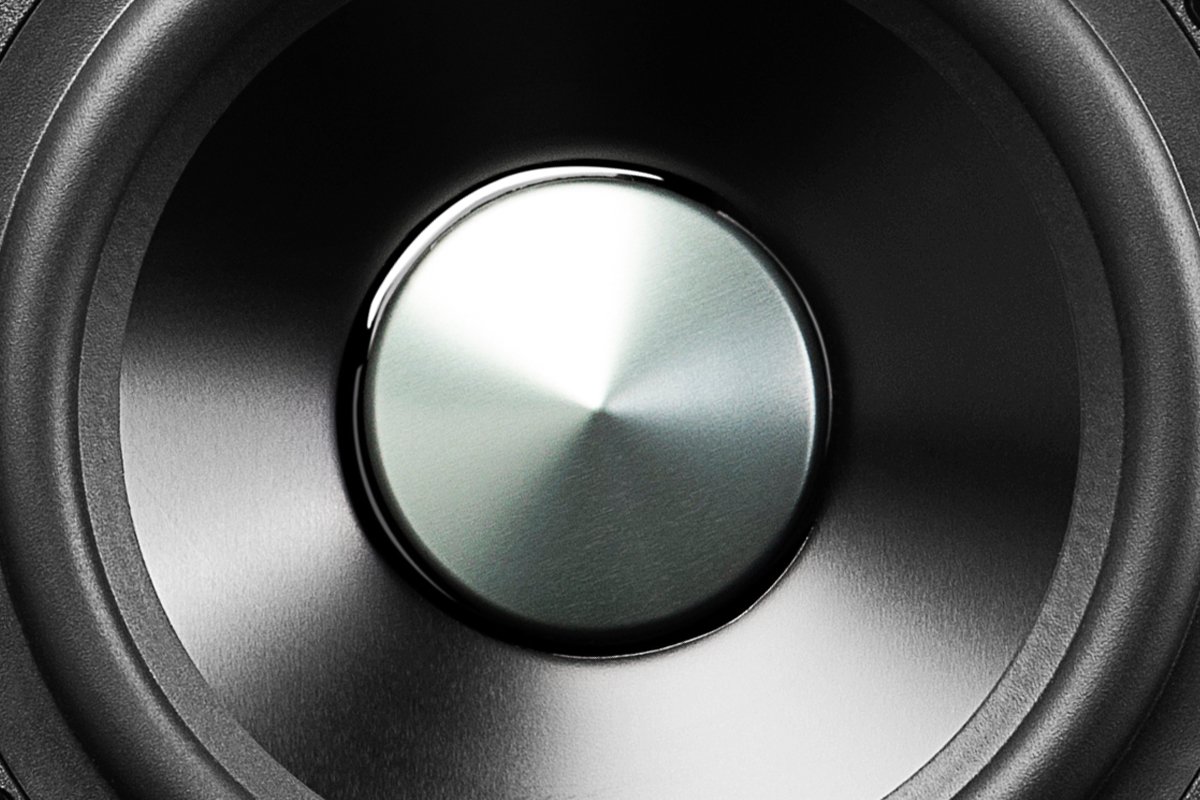During my three years on Simplifi, I’ve reviewed 27 different powered and active loudspeakers—more than any other product category. There’s a reason for this. Because of their all-in-one designs, speakers with built-in amplifiers work wonderfully for Simplifi’d hi-fi.
Most of the active and powered speakers I’ve reviewed for Simplifi have been digital designs, intended for home use. Some were fully self-contained, with built-in digital-to-analog converters (DACs) and network streamers. Many had inputs for connecting source components like computers, disc players, TVs, and even turntables. Several were fully wireless designs, requiring no hardwired link between the left and right speakers.
But I’ve also reviewed several analog-only active speakers designed for professional use. As I’ve discovered, studio monitors like Focal’s Shape 65 ($1998/pair, all prices USD) and PMC’s result6 ($2950/pair) are also great for home listening.
Edifier’s Airpulse A300Pro ($1999/pair) combines both approaches. In wireless connection mode, you can connect source components to the primary (right) speaker, which communicates with the secondary (left) speaker using Microchip Technology’s KleerNet wireless protocol. In professional mode, you can directly connect each speaker to the line-level outputs of a source component (preamp, mixing console, DAC-preamp) via the balanced XLR or unbalanced RCA inputs on the back of both speakers.
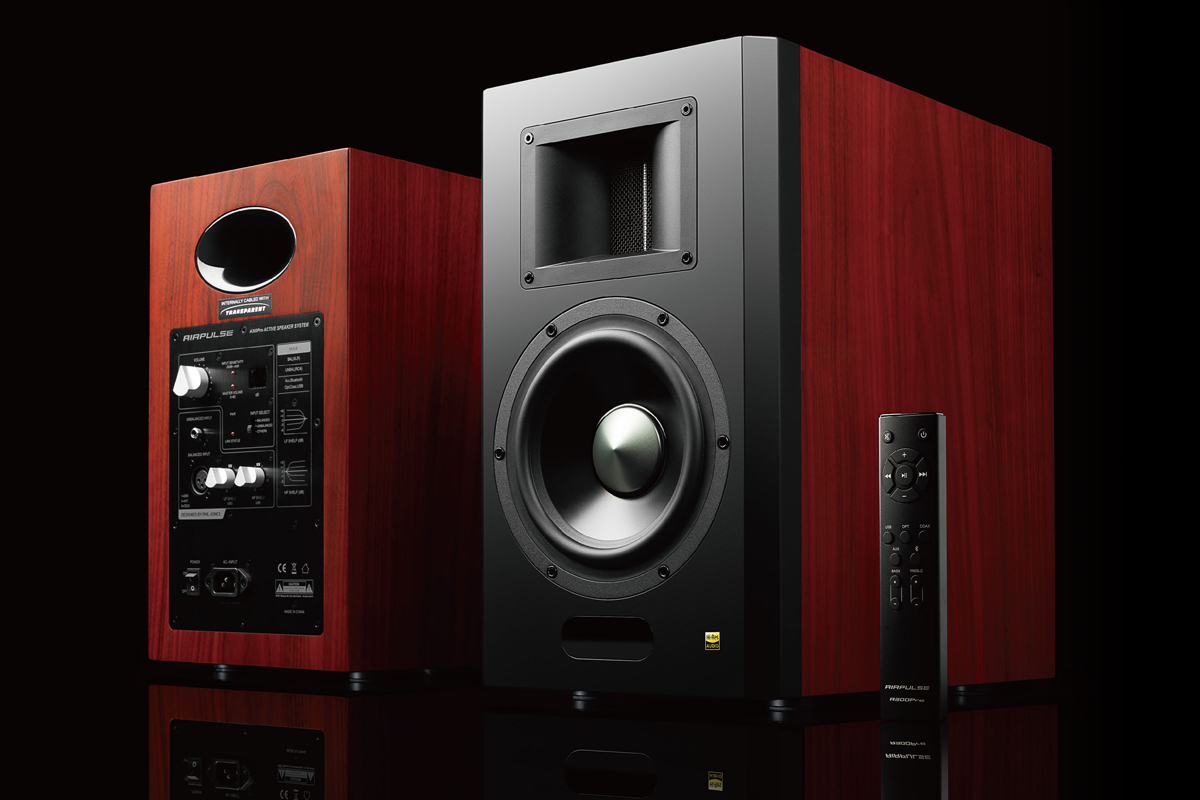
Airpulse is a sub-brand of the Beijing Edifier Technology Company. Headquartered in Beijing, China, the company’s Airpulse line includes passive and active speakers, as well as public-address and club speakers. The Airpulse design team is headed by Phil Jones, who is better known to audiophiles as the founder of the British speaker brand Acoustic Energy. Simplifi will publish a review of Acoustic Energy’s AE1 Active all-analog speakers ($1599/pair) on September 1.
The A300Pro is a fully active design, combining a 6.5″ midrange-woofer driven by a 120W class-D amp and a horn-loaded ribbon tweeter driven by a 10W class-D amp. It’s the top-of-the-line model in Edifier’s Airpulse range of powered and active speakers.
Inside and out
For an active bookshelf speaker, the A300Pro is quite large. Each enclosure measures about 9″W × 15″H × 14″D, and weighs 26.5 pounds. It’s also impressively rigid. Constructed from 1″ high-strength fiberboard, the enclosure is internally braced and lined with a 1.4″ layer of sound-absorbing material that is said to suppress internal standing waves.
Fit and finish are very good. The top, bottom, sides, and back are finished in a warm-looking, reddish walnut veneer. The black, molded front baffle protrudes 1.25″ from the enclosure proper. The baffle’s vertical edges are angled 45° toward the back of the speaker.
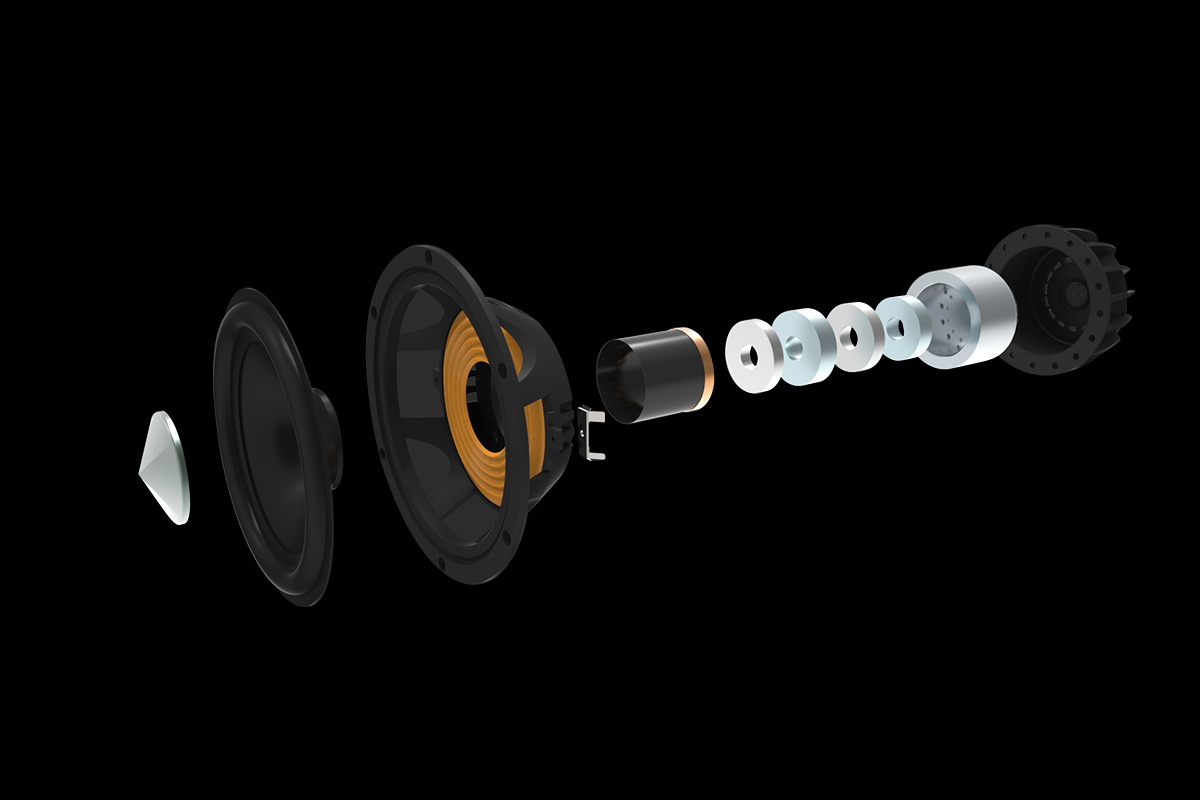
The 6.5″ midrange-woofer’s glossy black, magnesium-aluminum cone has a natural-colored aluminum dust cap protruding from the middle. The motor structure comprises an oversized neodymium-iron-boron magnet sandwiched between two steel plates, and an underhung, 2″-diameter voice coil. In operation, the underhung voice coil always stays within the magnetic gap, so the magnetic force on the voice coil remains constant throughout the driver’s excursion range. This “greatly reduces” harmonic distortion, Edifier says.
The A300Pro’s ribbon tweeter has a thin aluminum diaphragm suspended between powerful neodymium magnets, and is mounted in a textured black horn set into the front baffle. According to Edifier, benefits of this design include excellent transient response, extended amplitude response, and high sensitivity. The company claims that the horn improves coupling of the ribbon to the air and controls directivity, thus limiting the effect of room reflections on tonal balance.
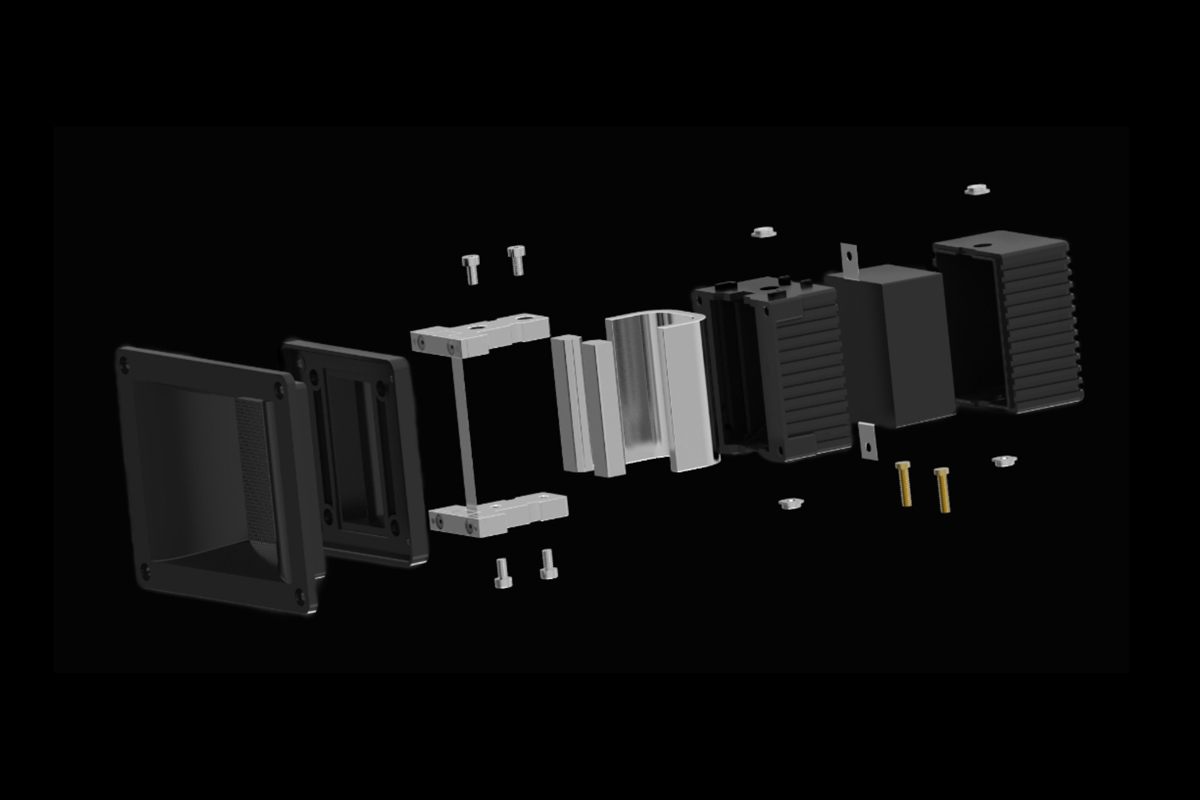
Each enclosure contains a 150W power supply, an XMOS xCore-200 multicore processor, a Texas Instruments TLV320AIC3268 digital signal processor (DSP), and a Texas Instruments TPA3251 class-D amplifier module that can deliver 120W to the midrange-woofer and 10W to the ribbon tweeter. Edifier does not specify crossover frequency or slope.
At the bottom of the rear panel on both speakers are an on/off rocker switch and a three-prong IEC power inlet. Above these are two analog inputs: a balanced XLR port and a single-ended RCA port. To the right of the XLR input are low- and high-frequency shelving controls that only function when the speaker is in professional mode. Above the RCA input is a rotary control that sets the volume when the speaker is in wireless mode, and input sensitivity over a range of -30 to +6dB when in professional mode; to its right are indicator LEDs that show which mode has been selected, and a small OLED screen that shows the current volume or sensitivity setting. Below that OLED is a three-position slider switch for selecting input type: balanced, unbalanced, or “Others.”
In the first two positions, the speaker is in professional mode. The third option puts the speaker in wireless mode, activating the row of inputs on the right side of the rear panel on the primary (right) speaker. From top to bottom, these comprise a pair of RCA line-level inputs, a coaxial S/PDIF input, a TosLink S/PDIF input, and a USB Type-B port. You can cycle through the sources by pressing the volume dial. Maximum resolution is 24-bit/192kHz PCM via the USB, optical, and coaxial inputs; DSD is not supported. The A300Pro also has Bluetooth connectivity, with support for Qualcomm’s aptX HD high-fidelity codec.
All digital streams are resampled to 24/96 PCM by the XMOS processor in the primary speaker, and analog signals from the auxiliary inputs are converted to 24/96 PCM.
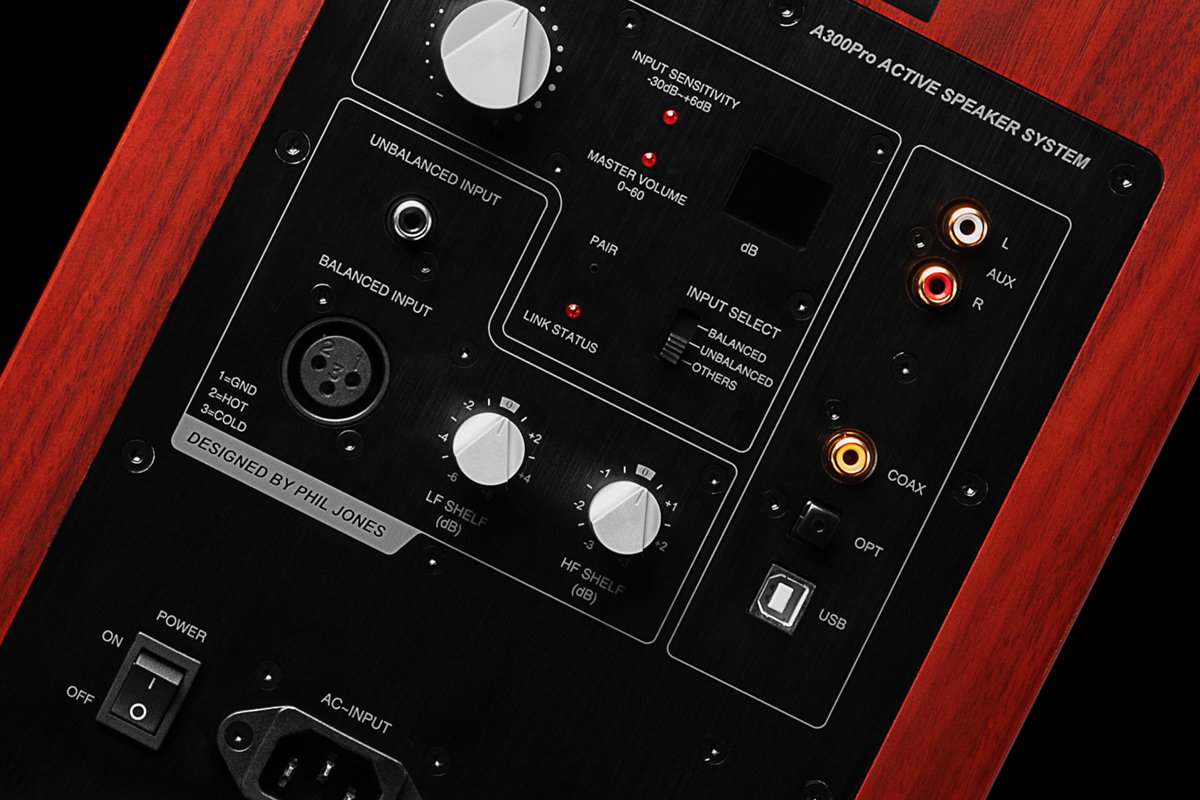
In wireless mode, the primary speaker uses KleerNet technology to send digital audio wirelessly to the secondary speaker at 24/96 resolution. The primary speaker plays the right channel and the secondary speaker plays the left channel—this designation cannot be changed.
In professional mode, the two speakers’ XMOS processors convert analog audio from the balanced and unbalanced inputs to 24/96 PCM.
In both modes, the 24/96 PCM signal is processed by each speaker’s TI DSP, which implements the crossover, sending audio to the TI class-D amplifier modules that feed the drivers. The DSPs also apply dynamic limiting to protect the tweeters.
From the front, the two speakers look identical, except for a small window at the bottom of the primary speaker that houses an IR receiver for the supplied remote control, and a monochrome OLED that displays source information, as well as numerical indicators for the volume, bass, and treble settings whenever these are adjusted with the remote. The remote only functions when the speakers are in wireless mode.
The remote has mute and on/off buttons at the top; and below that a five-way selector for volume control, track navigation, and play/pause functions. Further down are five buttons for selecting the source (USB, optical, coaxial, auxiliary, and Bluetooth) in wireless mode, and up/down buttons for bass and treble.
The remote is part of an unusually complete accessory pack, which includes power cords for both speakers, a USB-A-to-USB-B cable, a TosLink cable, a pair of RCA interconnects, and a full manual.
Setup
I placed the Airpulse speakers on 28″-high Monoprice Monolith speaker stands in the basement family room of our vacation home in Ontario, Canada, near Lake Huron. The speakers were 7′ apart, forming an equilateral triangle with my armchair, and their back panels were 30″ from the wall behind them.
I played some music from my MacBook Pro, which was connected to the USB port on the primary speaker. However, most of my listening was to music streamed from a Bluesound Node streaming DAC ($549), connected via a 2m (6.5′) AudioQuest Carbon coaxial cable from the Node’s coaxial output to the coaxial input on the primary speaker.
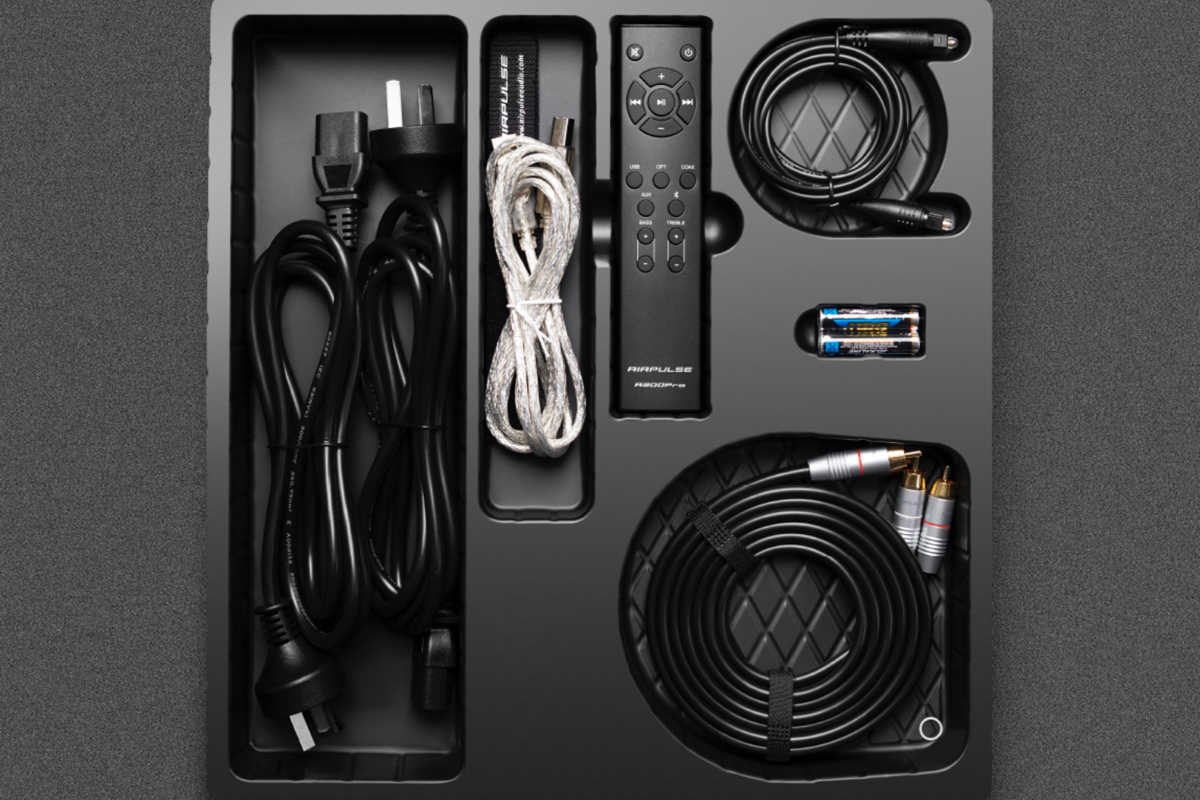
At one point during my listening, the wireless connection between the primary and secondary speakers dropped out for about ten seconds, so that only the right speaker was playing. But the connection resumed with no intervention on my part. That was the only hiccup I experienced with the wireless link between the two speakers. The stereo image was stable and well-focused throughout my listening, which leads me to assume that latency of the KleerNet connection is very low. Microchip specifies KleerNet’s latency at <20ms.
To listen to the Airpulse speakers in professional mode, I connected the Node’s coaxial output to the coaxial input of an exaSound e32 Mark II DAC (discontinued, $2499 when available), and connected the exaSound DAC to each speaker’s balanced input using a pair of 2m (6.5′) Argentum Acoustics Mythos XLR interconnects. In professional mode, I did my listening with the shelving controls in their flat positions.
Listening
When I started playing music through the A300Pros, the highs sounded a bit brittle, and the mids a bit harsh. Thinking the speakers would benefit from burning in, I played music from Radio Paradise’s RP World/Etc. Mix channel for about 20 hours, and this helped tame that harshness.
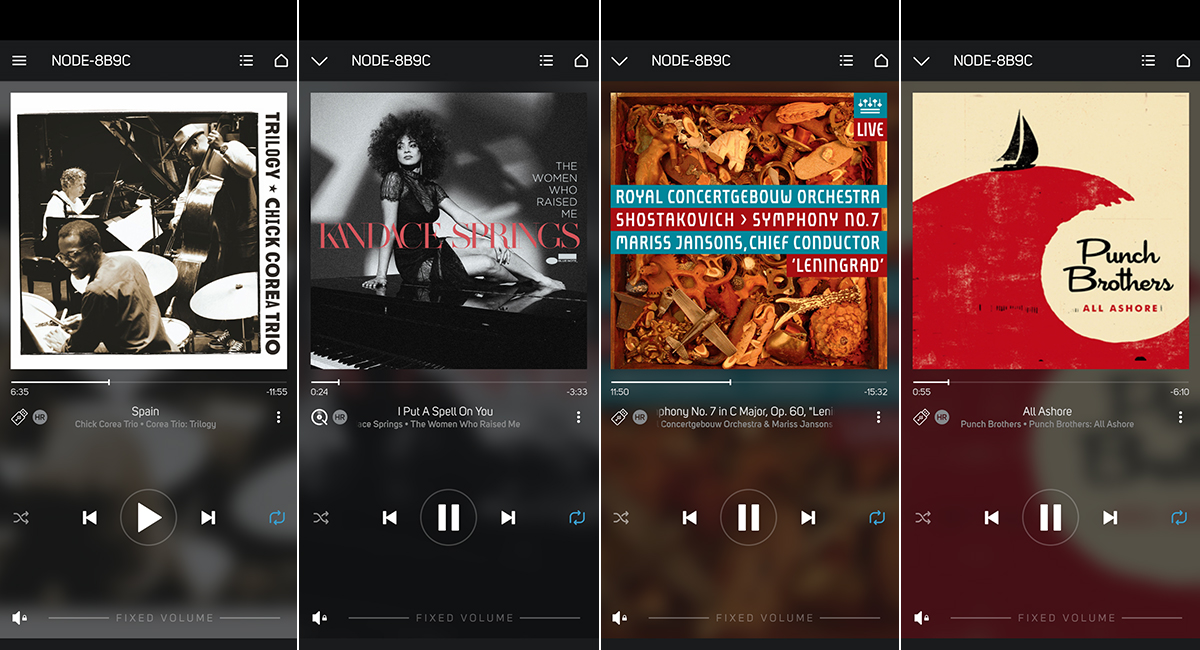
When I sat down for some serious listening, I started with a favorite track, “Spain,” by the Chick Corea Trio, from their live-concert compilation Trilogy (24-bit/96kHz FLAC, Concord Jazz Records/ProStudioMasters). On this track, the trio of Corea on piano, Christian McBride on double bass, and Brian Blade on drums is augmented by flamenco guitarist Niño Josele and flutist Jorge Pardo.
In wireless mode, with the Bluesound Node connected to the primary speaker’s coaxial input, the A300Pros sounded amazingly fast and articulate, and I could appreciate every aspect of the performers’ amazing musicianship and interplay. In particular, I was wowed by the holographic presentation of the five musicians on the wide, deep soundstage thrown by the A300Pros during passages when the trio and two guests are all playing together. Dynamics were thrilling. But, at times, the Airpulse speakers sounded hyper-detailed and occasionally a little strident.
The A300Pro’s speed and precision were apparent in Josele’s lovely, nostalgic solo that opens the track. It was easy to follow Josele’s impossibly fast trills, with ring, middle, and small finger playing the upper strings, and thumb and index finger playing harmony on the lower strings—every note was beautifully illuminated. However, the guitar tone was a tad less full than I’m accustomed to. During this intro, and the exuberant guitar passages later in the track, I heard more of the nylon strings and fingering and less of the guitar’s big woody body than I’d have liked.
Toward the end of the solo, McBride adds bowed notes on his double bass. Similar to what I had heard with Josele’s guitar, I was more aware of the action of the rosined bow on the strings, and less aware of the woody glow of the instrument’s sound box. Also, McBride’s lowest bowed notes sounded a little faint, as if the speakers were starting to run out of gas as they approached 40Hz. Boosting the bass setting didn’t help much—it just made the mid- and upper bass a little more droneish. Later in the track, McBride’s plucked double-bass solo sounded wonderfully fast and articulate, but again, insufficiently woody and resonant.
Blade’s drumming showed off the A300Pro’s impressive dynamic capabilities. His hard rim shots were almost explosive. Snare rolls were wonderfully articulate, but sounded a little hard. Rolls on the floor tom sounded delicious—the vibration of the drumhead, followed by the resonant decay of the drum’s body had marvelous palpability. But the kick drum was a bit thuddy. When Blade plays cymbal rolls with mallets, I heard a lovely metallic shimmer, but when the cymbals are struck with a stick they sounded a bit hot and splashy. The same was true of other metal surfaces in Blade’s kit; for example, when the hi-hat is played closed. Similarly, Pardo’s flute sounded a little shrill, with his blowing too pronounced.
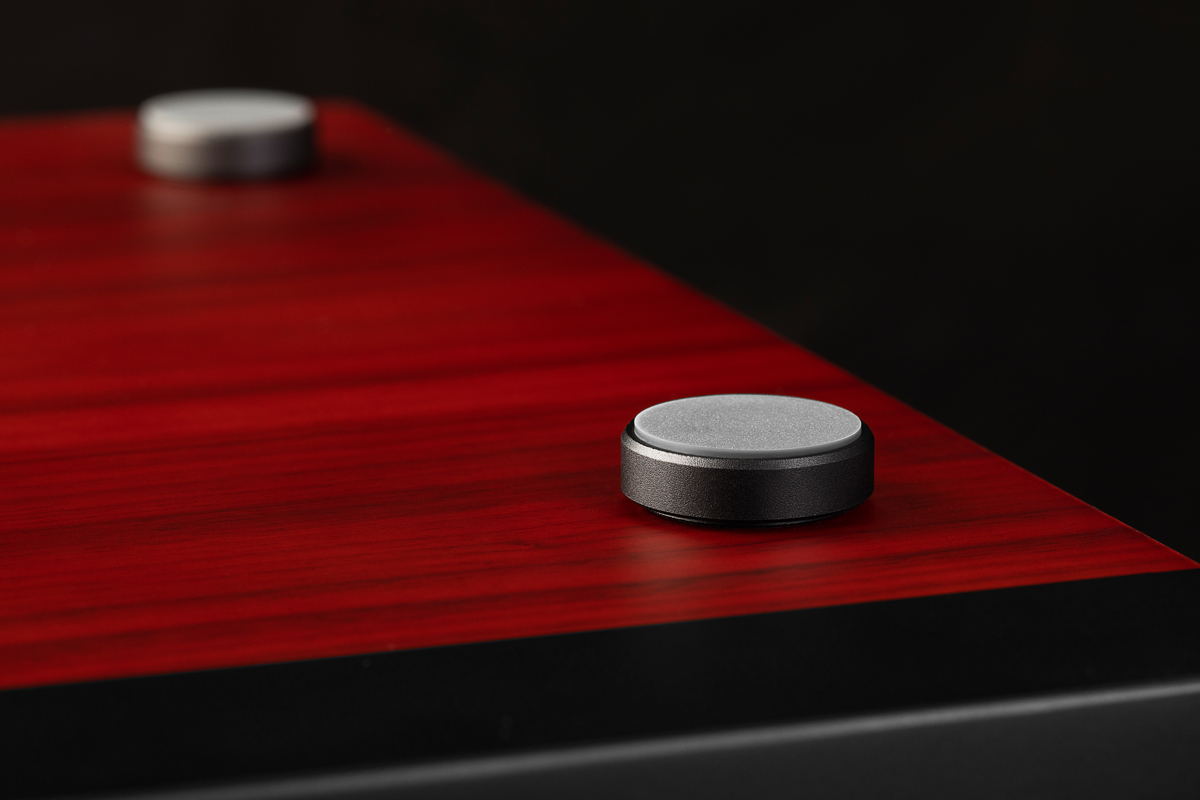
Next, I listened to the same track in professional mode, with the Bluesound Node’s coaxial output connected to the coaxial input of an exaSound e32 Mark II DAC, and the DAC’s balanced XLR outputs to the balanced XLR input on each Airpulse speaker.
The sound was noticeably warmer and rounder, with less glare; and it was also livelier and more engaging. Microdynamics were much improved, and I became more aware of Corea’s varied touch on the piano; for example, his legato chords decayed more slowly and naturally. Blade’s cymbals were less splashy, and the nylon strings on Josele’s guitar sounded warmer—they had been harder and edgier with the A300Pros’ digital connection when the speakers were in wireless mode. Pardo’s flute was less shrill, and the blowing noises less edgy and pronounced. The soundstage was wider and deeper, and also more filled-in; with the digital connection, the players had seemed more like cardboard cutouts.
Next up was Kandace Springs’s cover of Screamin’ Jay Hawkins’s “I Put a Spell on You” from The Women Who Raised Me (24/96 FLAC, Blue Note Records/Qobuz). Again, I started with the A300Pros in wireless mode and a digital connection, with the Bluesound Node connected to the primary speaker’s coaxial input.
The track begins with Springs on piano, playing the main theme from the first movement of Ludwig van Beethoven’s “Moonlight” sonata. The piano tone was rich and resonant, but I found the attacks a tad too sharp. The Airpulse speakers added a slightly papery edge to Springs’s rich alto voice, especially in passages when she uses throaty or whispery inflections, and her sibilants were a little hot. Located just to Springs’s right, David Sanborn’s alto sax wailed impressively, but had a bit too much of a reedy edge. Clarence Penn’s drums were impressively hard-hitting, a testament to the dynamic capabilities of these speakers. Soundstaging was outstanding—wide and deep—with Springs’s voice and all the instruments precisely placed. But in passages where the band was going full tilt, the presentation was somewhat congested.
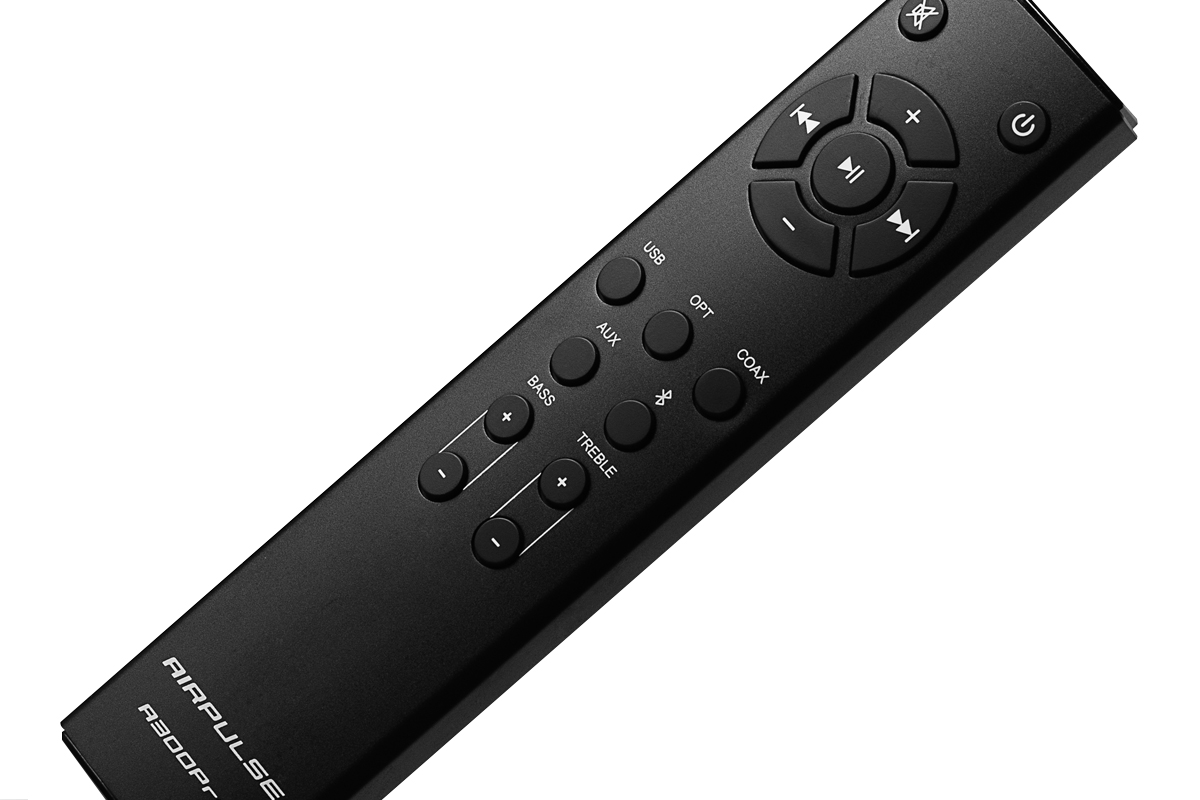
On switching to the exaSound DAC and professional mode, the soundstage was even deeper and more filled-in—the aural images had greater corporeality. The edginess in Springs’s voice and Sanborn’s alto sax was less pronounced. Again, there was less glare, and the presentation was less congested.
A riveting live recording of Dmitri Shostakovich’s Symphony No.7 “Leningrad” by the Royal Concertgebouw Orchestra, conducted by Mariss Jansons (24/88.2 FLAC, RCO Live/ProStudioMasters), showed off the A300Pros’ outstanding soundstaging and dynamic capabilities. At the heart of the first movement is an extended march theme depicting the descent of the Nazi forces on Shostakovich’s home city during World War II. The section begins almost jauntily, but inexorably builds in ferocity, and by the end is completely terrifying.
As the section builds in intensity, I found the tone of the violins on the front left of the soundstage a bit steely; and later in the section, the brass instruments sounded a little strident. But what struck me far more was the scale of the presentation: the depth and height of the soundstage, and the amazing imaging and front-to-back layering. Every element in the dense wall-of-sound passages was clearly delineated—the rat-a-tat snare in the right rear, the tympani in the center rear, the trumpets behind the violins, a mad xylophone on the far left. And the A300Pros kept pace dynamically—while this section sounded somewhat brash, there was no sense of compression. This passage is meant to scare the bejeezus out of the listener, and through these Airpulse active stand-mounters, it did.
Switching to pro mode and playing the movement through the exaSound DAC wrought a major improvement. The sound was less glary, and more transparent. The steely quality of the violins was tamed, and I heard more of the rosiny action of the bows on the strings. I hadn’t been aware of congestion with the digital connection in wireless mode; but in pro mode, the sound was noticeably more transparent, so I could hear more deeply into this dense score. Groups of instruments were even more precisely delineated on the soundstage. Whatever hardness remained seemed to be down to the composer, the conductor, and the Amsterdam players trying to frighten me to the core, rather than an artifact of the speakers.
On the title track of Punch Brothers’ All Ashore (24/96 FLAC, Nonesuch Records), the sound of the bluegrass instruments in the gentle opening was delectable. The attacks of Noam Pikelny’s banjo on the left and Chris Thile’s mandolin in the center were fast and clear, but not etched or spotlit. Chris Eldridge’s guitar in the right center, played mainly on the lower strings, had wonderful woody richness, and the upper strings of Gabe Witcher’s fiddle on the far right had a lovely ringing clarity. But when Paul Kowert joined in on double bass in the left center of the soundstage, the sound of his instrument was a little thuddy and indistinct.
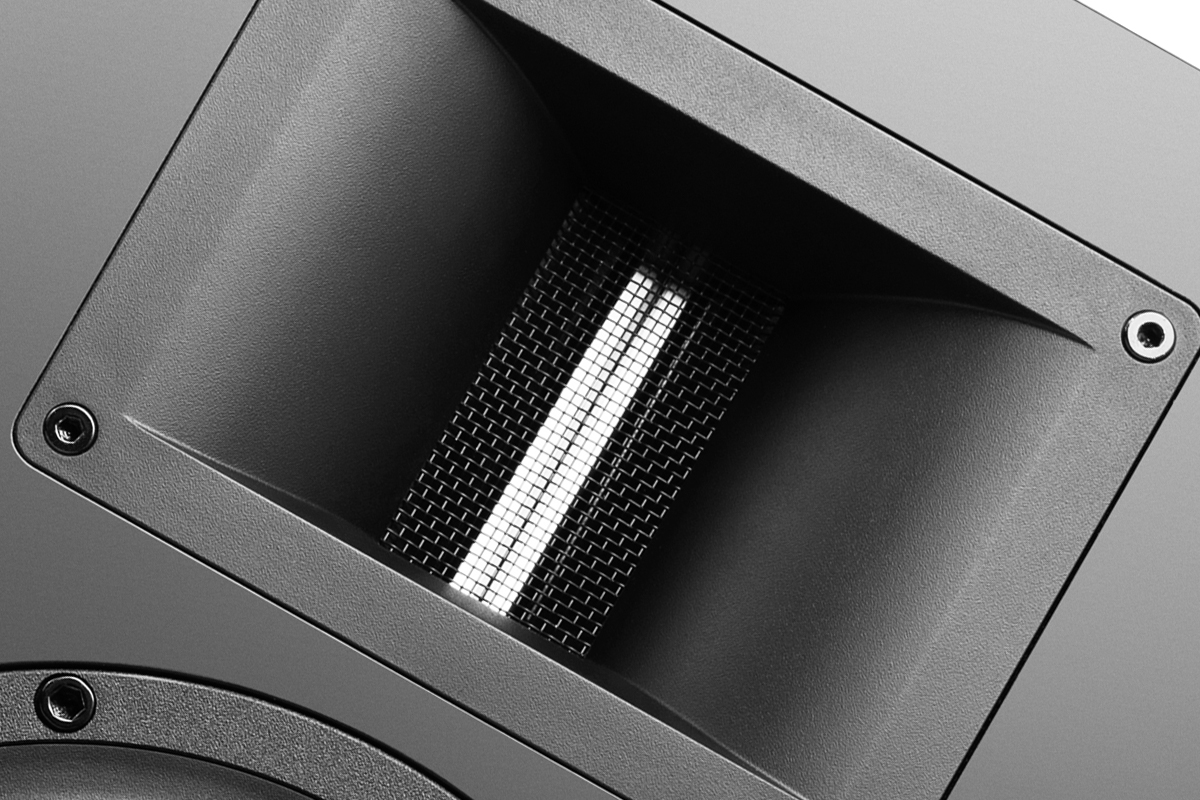
I loved the portrayal of Thile’s high-tenor voice, and his bandmates’ harmonizing. I could practically see Thile’s lips pursing as he formed consonants.
As I had experienced with the other musical selections, soundstaging and imaging were outstanding. Each instrument and voice occupied a clearly defined space, which made it easy to admire the interplay of these supremely talented musicians.
Again, the A300Pros’ sound with an analog connection from the exaSound DAC was noticeably less glary. All the instruments sounded richer and less etched. Thile’s voice sounded more embodied; and a slightly papery edge, which I hadn’t noticed before, was gone. The exaSound DAC revealed this artifact by its absence. Microdynamics were better, so that expressive inflections in his singing emerged into the foreground.
Comparison
I compared the sound of the Bluesound Node/Airpulse A300Pro combination in wireless mode to KEF’s LS50 Wireless II ($2499.99/pair). This was an informative comparison, as the combined price of the A300Pros and the Bluesound Node is only $48.01 higher than the price of a pair of LS50WIIs. For this comparison, I streamed all selections from Qobuz, and matched the outputs of the two sets of speakers within 0.5dB using pink noise and a sound-pressure-level meter.
On the Chick Corea Trio’s “Spain,” the sound of Josele’s guitar was fuller and warmer through the KEFs. Corea’s piano sounded bigger—more like a concert grand. Pardo’s flute was less shrill, without the excess breathiness that bothered me with the Airpulses. Cymbals were crisp and metallic, but not sizzly. The transients during McBride’s double-bass solo were faster on the Airpulses, so that it was a little easier to follow his rapid-fire playing. His instrument sounded woodier and warmer through the KEFs, but also a little muddier at the low end of its range. Through the Airpulse speakers, each musician was delineated a little more clearly. With the KEFs, the soundstage was not quite as deep, and the aural images of the five musicians were not quite as focused.
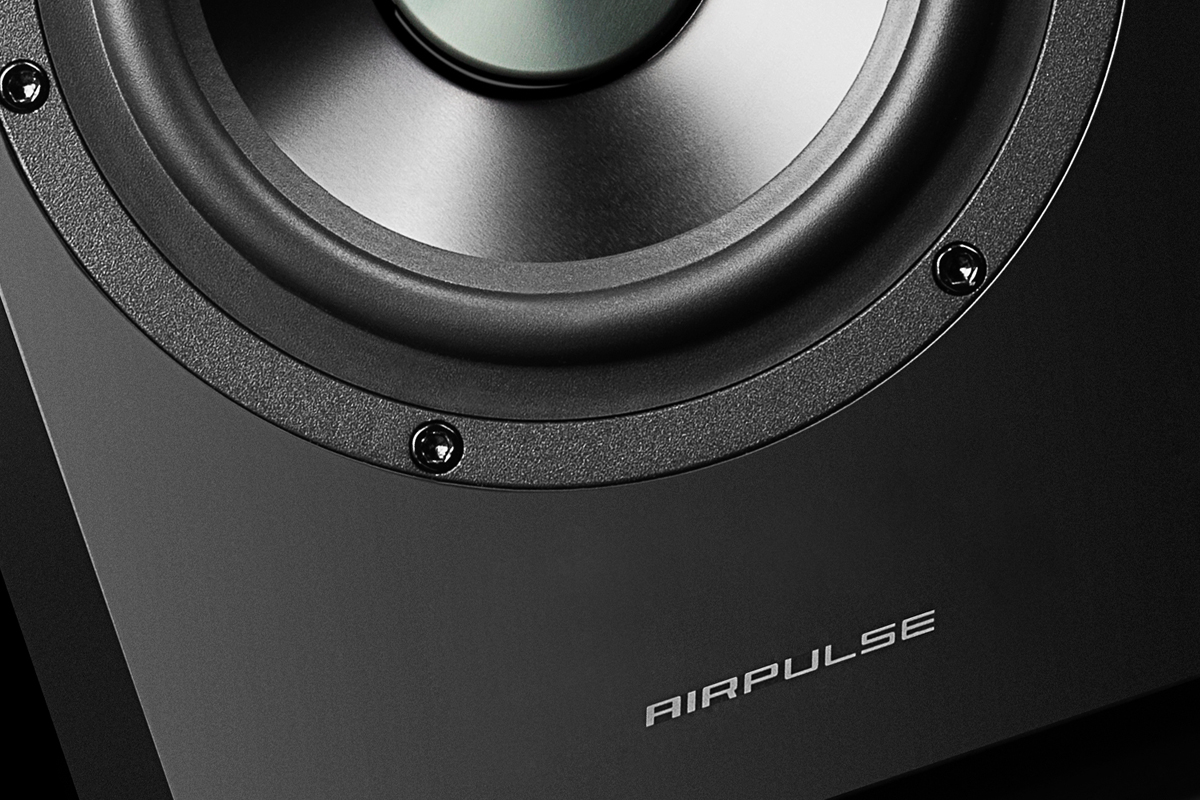
On “I Put a Spell on You,” Springs’s piano and her alto voice both sounded fuller and richer through the KEFs. Her throaty inflections were more clearly an artistic effect, rather than sounding like an aural artifact, and her sibilants were less hot. Sanborn’s sax had just as much bite, but less of an edge. The soundstage was not as deep or tall through the KEFs as it was through the Airpulses. And again, the musicians were better differentiated with the Airpulse speakers.
In Shostakovich’s “Leningrad” symphony, the brashness that bothered me with the Airpulse speakers was absent on the KEFs. Violins had plenty of rosiny bite and expression, but didn’t sound steely. The bass drum and tympani had better definition through the Airpulses, but sounded bigger, more powerful, and more threatening with the KEFs. While orchestral tone was less transparent through the KEFs, it was weightier. Dynamics were more effortless with the little KEFs, but the Airpulse speakers created a deeper soundstage, with better front-to-back layering, so the groups of instruments were delineated more clearly.
On Punch Brothers’ “All Ashore,” Thile’s high-tenor voice sounded a little fuller and more embodied through the KEFs. While still impressively wide and deep, the soundstage was less vast than it was with the Airpulse speakers. With Thile’s mandolin, Pikelny’s banjo, and Witcher’s fiddle, the KEFs had less of the ringing clarity I enjoyed so much with the Airpulses. But Eldridge’s guitar and Kowert’s double bass sounded warmer and woodier through the KEFs. Overall, the KEFs sounded a little smoother, and the Airpulses were a little edgier, but also more incisive and revealing.
Conclusion
Edifier’s Airpulse A300Pro has many of the sonic characteristics you expect from a well-engineered studio monitor. It’s highly revealing—at times, mercilessly so. The sonic characteristics that stood out for me were the A300Pros’ vast soundstage, their precise imaging, and, most of all, their outstanding clarity.
The A300Pro has abundant connectivity options. In wireless mode, a pair can work wonderfully as a low-footprint Simplifi’d music system. In professional mode, the A300Pro can work wonderfully for desktop audio or home recording. But you can also mate a pair of A300Pros with a premium DAC-preamp for serious sit-down listening.
In the end, I found much to admire about the A300Pros, but I couldn’t quite love them. Other listeners may respond differently. For anyone looking for an affordable, highly revealing, all-in-one active speaker, the Airpulse A300Pro deserves a careful listen.
. . . Gordon Brockhouse
Associated Equipment
- Active loudspeakers: KEF LS50 Wireless II
- Sources: Bluesound Node streaming DAC, Apple MacBook Pro computer (early 2015) running macOS Big Sur 11.4 and Audirvana 3.5.46, exaSound e32 Mark II DAC
- Speaker stands: Monoprice Monolith (28″)
- Digital cable: AudioQuest Carbon (2m, coaxial)
- Analog interconnects: Argentum Acoustics Mythos (2m, XLR)
Edifier Airpulse A300Pro Active Loudspeakers
Price: $1999 USD per pair.
Warranty: One year parts and labor.
Edifier USA
428 Hemphill Street
Fort Worth, TX 76104
Phone: (817) 265-2160
Edifier Canada
9-13511 Crestwood Place
Richmond, BC V6V 2G1
Phone: (604) 232-5227
Email:
Website: www.airpulse.com



